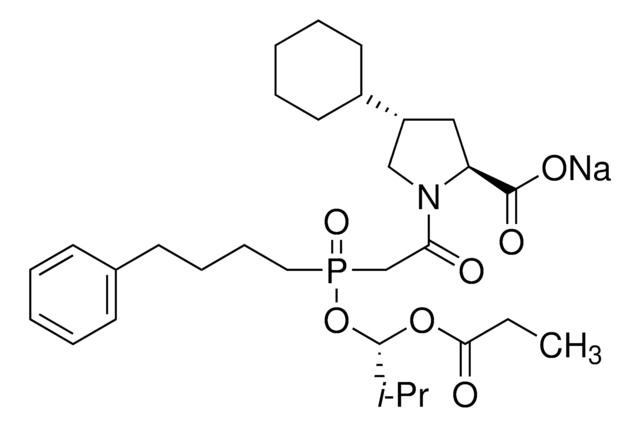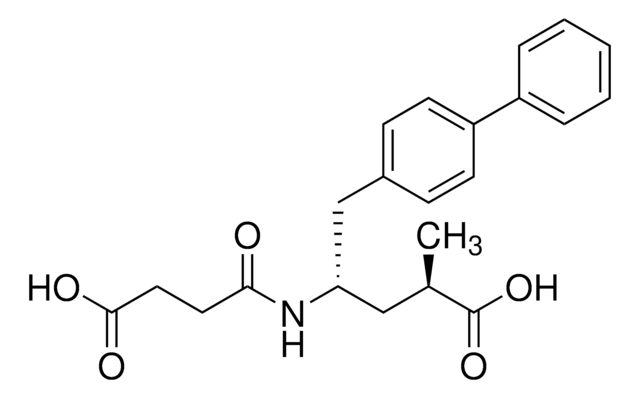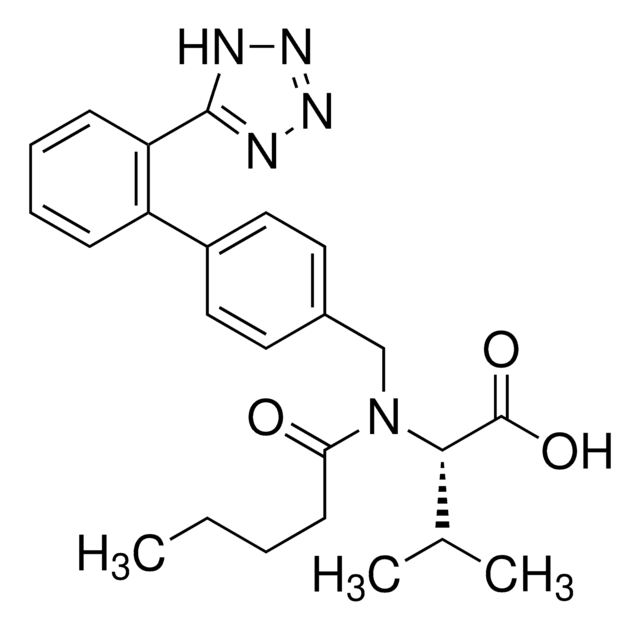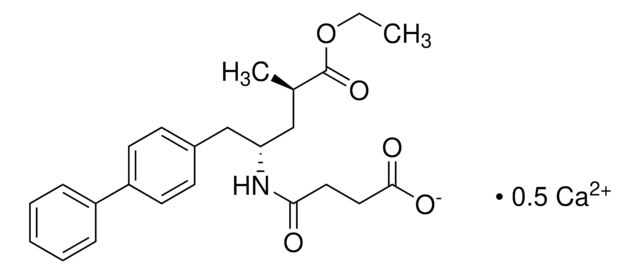1270800
USP
Flecainide acetate
United States Pharmacopeia (USP) Reference Standard
Synonym(s):
Flecainide acetate salt, N-(2-Piperidylmethyl)-2,5-bis-(2,2,2-trifluoroethoxy)benzamide acetate salt
About This Item
Recommended Products
grade
pharmaceutical primary standard
API family
flecainide
manufacturer/tradename
USP
application(s)
pharmaceutical (small molecule)
format
neat
storage temp.
2-8°C
SMILES string
CC(O)=O.FC(F)(F)COc1ccc(OCC(F)(F)F)c(c1)C(=O)NCC2CCCCN2
InChI
1S/C17H20F6N2O3.C2H4O2/c18-16(19,20)9-27-12-4-5-14(28-10-17(21,22)23)13(7-12)15(26)25-8-11-3-1-2-6-24-11;1-2(3)4/h4-5,7,11,24H,1-3,6,8-10H2,(H,25,26);1H3,(H,3,4)
InChI key
RKXNZRPQSOPPRN-UHFFFAOYSA-N
Gene Information
human ... SCN5A(6331)
Looking for similar products? Visit Product Comparison Guide
General description
For further information and support please go to the website of the issuing Pharmacopoeia.
Application
- Advanced Drug Delivery for Tuberculosis Treatment: Flecainide acetate is integral in developing inhalable porous particles, demonstrating effective lung drug delivery systems for treating tuberculosis. This novel application optimizes the therapeutic index of antituberculosis medications, minimizing systemic side effects while maximizing pulmonary uptake (Campos Pacheco et al., 2024).
- Cardiac Arrhythmia Management: Flecainide acetate, known for its role in arrhythmia management, has been studied for its efficacy following patent foramen ovale closure. The drug′s mechanism as a sodium channel inhibitor makes it a pivotal agent in preventing atrial fibrillation post-surgery, enhancing patient recovery and long-term cardiac health (Apostolos et al., 2024).
- Genetic Research on Arrhythmias: Flecainide acetate is used in genetic models to establish a life-threatening arrhythmia model by screening mutagenized mice. This research aids in identifying genetic predispositions to arrhythmias, paving the way for targeted therapies that modify disease progression and improve patient outcomes (Okabe et al., 2024).
- Electrophysiological Studies: Flecainide acetate′s properties as a class 1C antiarrhythmic agent are utilized in clinical electrophysiology to assess and refine therapeutic strategies for ventricular complex suppression in nonischemic cardiomyopathy. This application underlines its importance in detailed cardiac function studies and therapy optimization (Ruskin et al., 2024).
- Toxicology and Safety Profiling: Research on the potential pitfalls in using hypertonic sodium bicarbonate for treating cardiac toxic drug poisonings, where flecainide acetate is involved, underscores the complexity of managing drug-induced cardiac emergencies. This study provides crucial insights into safer, more effective antidotal therapies (Chan and Buckley, 2024).
Analysis Note
Other Notes
related product
Signal Word
Danger
Hazard Statements
Precautionary Statements
Hazard Classifications
Acute Tox. 4 Oral - Eye Irrit. 2 - Repr. 1B - Skin Irrit. 2 - STOT SE 3
Target Organs
Respiratory system
Storage Class Code
6.1C - Combustible acute toxic Cat.3 / toxic compounds or compounds which causing chronic effects
WGK
WGK 3
Flash Point(F)
Not applicable
Flash Point(C)
Not applicable
Certificates of Analysis (COA)
Search for Certificates of Analysis (COA) by entering the products Lot/Batch Number. Lot and Batch Numbers can be found on a product’s label following the words ‘Lot’ or ‘Batch’.
Already Own This Product?
Find documentation for the products that you have recently purchased in the Document Library.
Our team of scientists has experience in all areas of research including Life Science, Material Science, Chemical Synthesis, Chromatography, Analytical and many others.
Contact Technical Service






